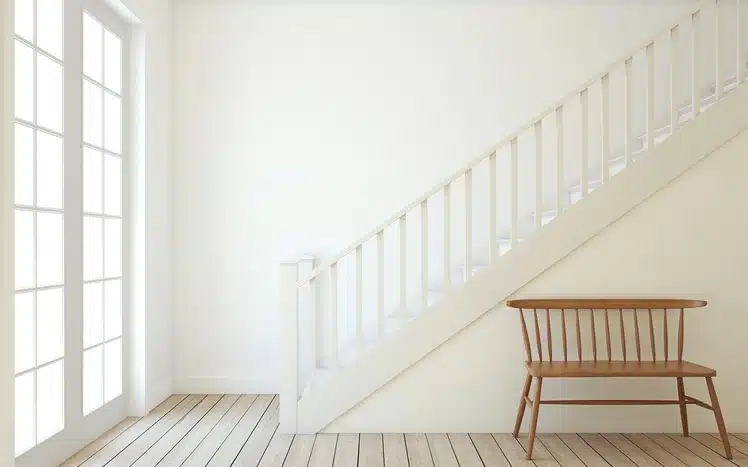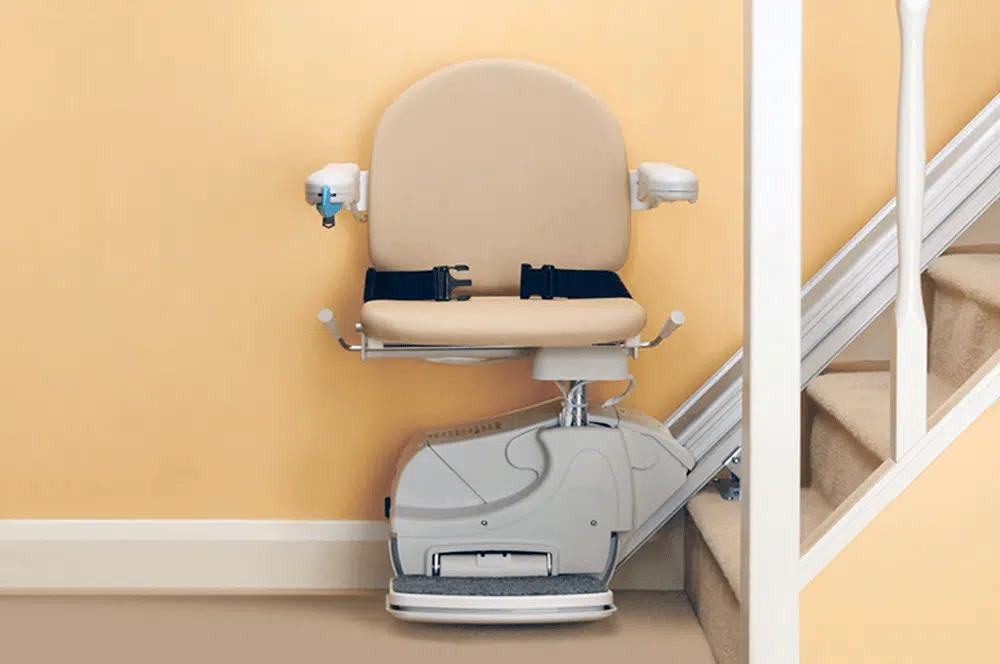Schedule a FREE In-Home Evaluation!
Simply enter your details below or call 855.543.8632 and a trusted representative will be in touch to arrange a home survey and provide your FREE no obligation quotation.
Straight Stair Lifts
Serving Kansas and Missouri
Schedule Your Free In-Home Consultation!
Our stair lifts are produced by world-class manufactures designed for maximum safety and durability. With so many choices in the market today it can become confusing to try and pick the best stair lift for your needs.
Having put hundreds of these into customers’ homes, we have the expertise needed to take out the frustration, narrow down the choices and help you make the right decision. Always feel free to call us with any questions or concerns.
Why Choose Access Done Easy for Your Stair Lift?
- Free in-home evaluations and consultations
- 4.9 star rating on Home Advisor
- Best of Home Advisor 2019 Winner
- Warranty offered
- New and refurbished stair lifts available
- Accredited BBB business with A+ rating
- We can repair older stair lift models that most companies can’t fix
- Over 25 years of experience
- We service residential and commercial properties
Regain your independence! Schedule your in-home evaluation by calling 855.543.8632 or fill out our contact form.
Access Done Easy Customer Testimonial
This is the most pleasant and kind gentlemen to work with. They were very respectful of my Mother making sure she understood everything and could find what we needed in her budget. They worked with our extremely long stair case and found exactly what we needed so my Mother has access to the whole house. They have always answered the phone promptly to answer any questions I have had with the chair lift. I can’t say enough nice things about this Father and Son team. I couldn’t be happier with our experience with them. – N.R.
About Straight Stair Lifts
All of our straight stair lifts mount to the treads of the stairs, never to the walls, and rarely on a landing. There are several rail types as you can see from the pictures. They vary in width and shape. They have all been designed to allow people to pass by easily. While they each have their pros and cons, they all provide a stable platform for the carriage and seat to travel on.
The easiest way to think of the rail is to imagine it as a 4×4 or 2×6 piece of lumber. Lay it on the stairs and rest it on the noses of each step. It will make a little triangle at the bottom landing where it touches the floor. On a typical installation they typically go past the top landings nose by about 3 to 5 inches to get the seat height to match the height at the bottom. Many people are surprised how easily they climb past the folded seat and the rail. The reason its easier than they think is that when we walk or climb we put our feet near our center of gravity, making the lane that our feet and legs travel along much narrower than our shoulders and hips, which we habitually use to judge comfort of an enclosed space.
Fold Up Abilities
All of our seats and footrests fold up, and out of the way. Many of the lifts have folding arms too. Our best selling lifts fold up as narrow as 11 inches from the wall, the tightest fitting lift on the market.
The riding position of the seat is with your back to the wall where the rail is mounted closest to and legs pointing to the opposite wall with your feet on the footrest. When the lift is at the top of the stairs the seat swivels, typically 45 and 90 degrees to allow for safe and easy exit or entry.
Stairlift Power Source
Most stair lifts are battery operated. They have batteries in the carriage that travel with the seat to provide power to a 24vDC motor. The batteries are automatically charged when the carriage is at its parked position. Some have a continuous charging rail or trailing cable that allows the chair to be charged anywhere along its travel. Some have charge contacts that only charge when the chair is parked at the top or bottom of the rail where you usually get on or off it. Battery operated units can be plugged into any standard 120v AC outlet and because the current draw is low, they can go into an existing shared outlet. Like a car battery, stair lift batteries eventually wear out. The huge majority of our customers get 4 to 6 years before needing replacement. When AC power is lost a battery operated unit can get from 12 to 30 round trips before becoming drained.
There are still some stair lifts that work on AC. They have no batteries. These are typically the least expensive and most basic units around and require 120v for them to work. If you are in a basement or mid flight, when power goes out, they will not get you upstairs again. AC units can have a peak draw of 8 to 9 amps. According to the National Electrical Code, any device that draws more than half of an outlets rated amperage (the most common is 15 amps) then it needs a dedicated outlet. Sometimes the initial savings of an AC unit are offset by the installation of a dedicated circuit for it.
Stair Lift Installation
If you made it this far, congratulations! You know the basics of straight stair lifts. Some situations whether it’s the physical conditions of the user or the home layout, there are options to help overcome challenging installations. Special techniques and options allow Access Done Easy to customize a lift to cover a wide variety of needs and requirements. This capability makes us a premier supplier and installer.
Many customers require a lift for the basement staircase where there is a basement door. They want the door there to divide the house for many reasons, from airflow and noise to heating. If you cut a rail short to allow the door to close it can cause the seat to be lower than what’s comfortable or safe for the user to sit in or exit the seat. Many stair lifts have rails with tall or extended mounting brackets available to lift a rail to set the seat to the proper height even though the rail has been cut short to allow the door to close. Our entire line has this capability.
Another layout problem is often at the bottom of the stairs. Since the bottom of the rail goes all the way down to the floor it will intrude into a hallway from 9 to 14 inches. This can cause a trip hazard or block the path of person using a walker. In the “old days” some installers would end the bottom of the rail on the first step. This is unsafe, and has led to many injuries. We don’t recommend this, and will not do it. A better solution is a hinged rail (either manual or automatic) or a sliding rail that automatically moves in the direction of the chair. It’s a great innovation a neat solution. Some lifts even have offset footrests to minimize the “foot to landing” gap.
The previous challenges dealt with home layout or site environment. People experience personal challenges with the operation of a stair lift. There are many options to assist users with physical challenges. Hand controls can be moved to a strong hand, or placed on both armrests. They can be paddle, toggle or rocker switches. Remote call sends can even be used by the rider if need be. Power swivels help those who have difficulty manually swiveling the seat. Power folding footrests help users fold up the lift to clear the staircase without bending over or using a foot.
Don’t let staircases be a virtual roadblock.
Our attention to detail and environmental awareness gives us a tremendous ability to supply the best stair lift for you in the Kansas City area. Give us a call today for a free in home evaluation and consultation.




